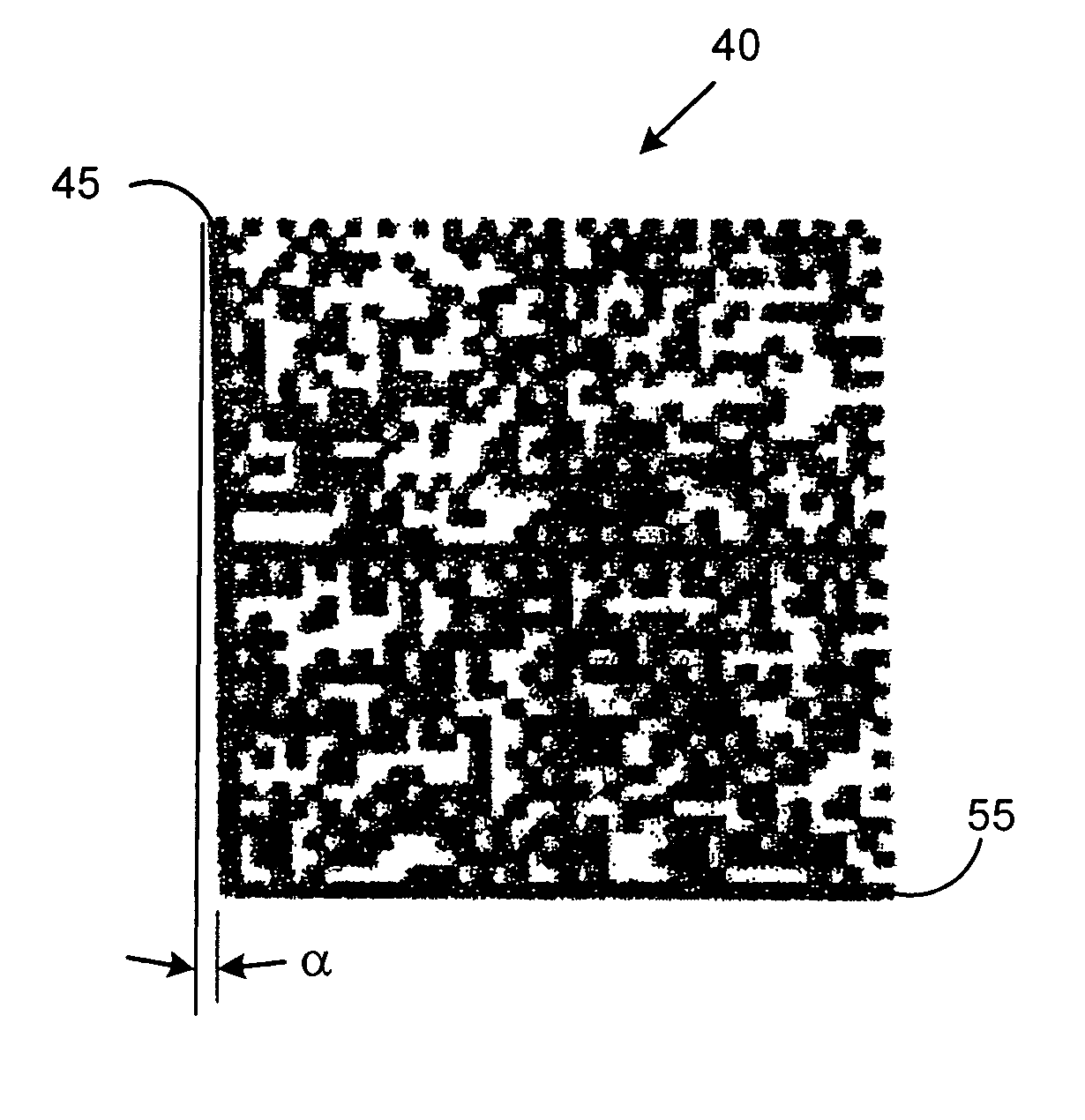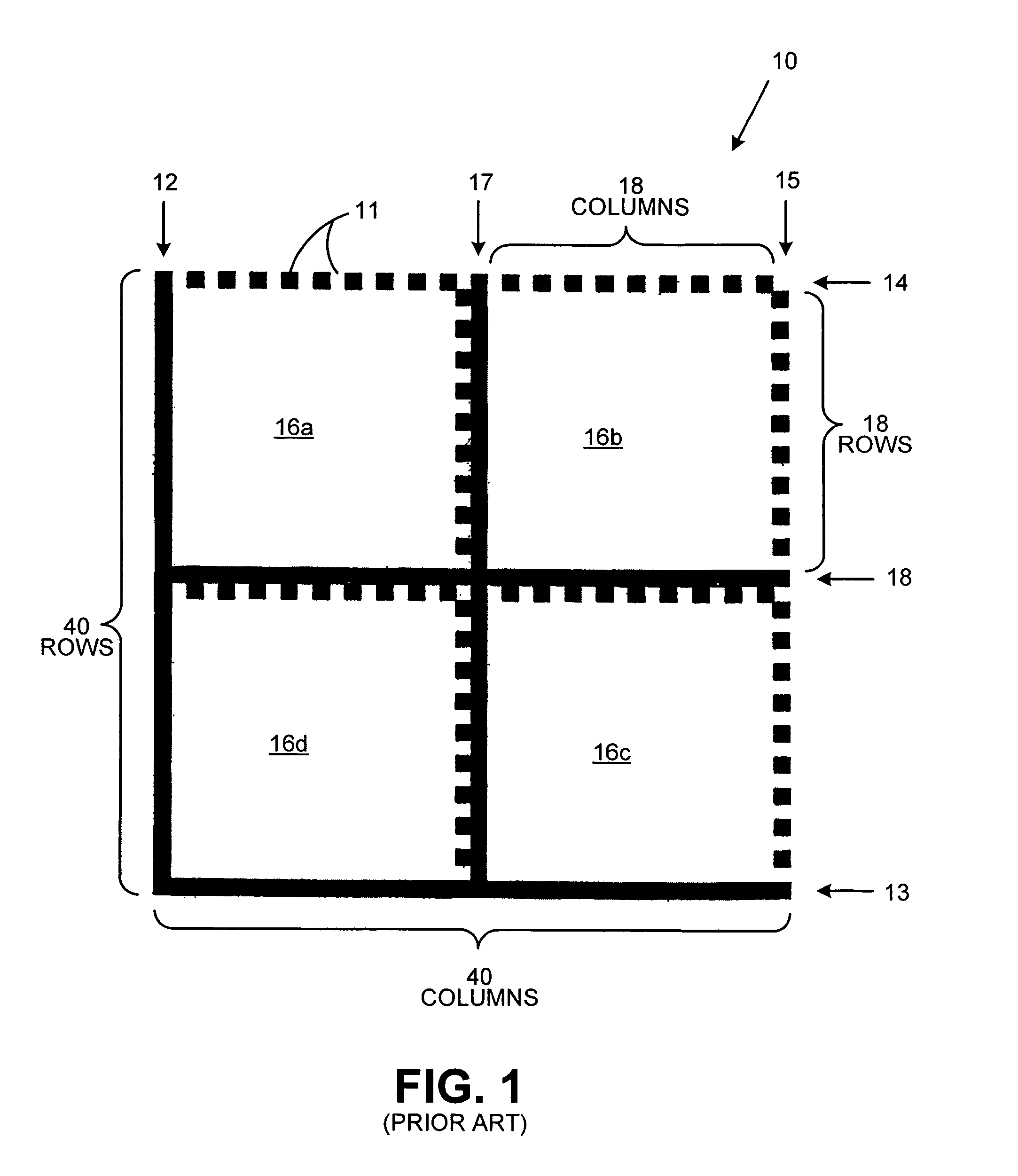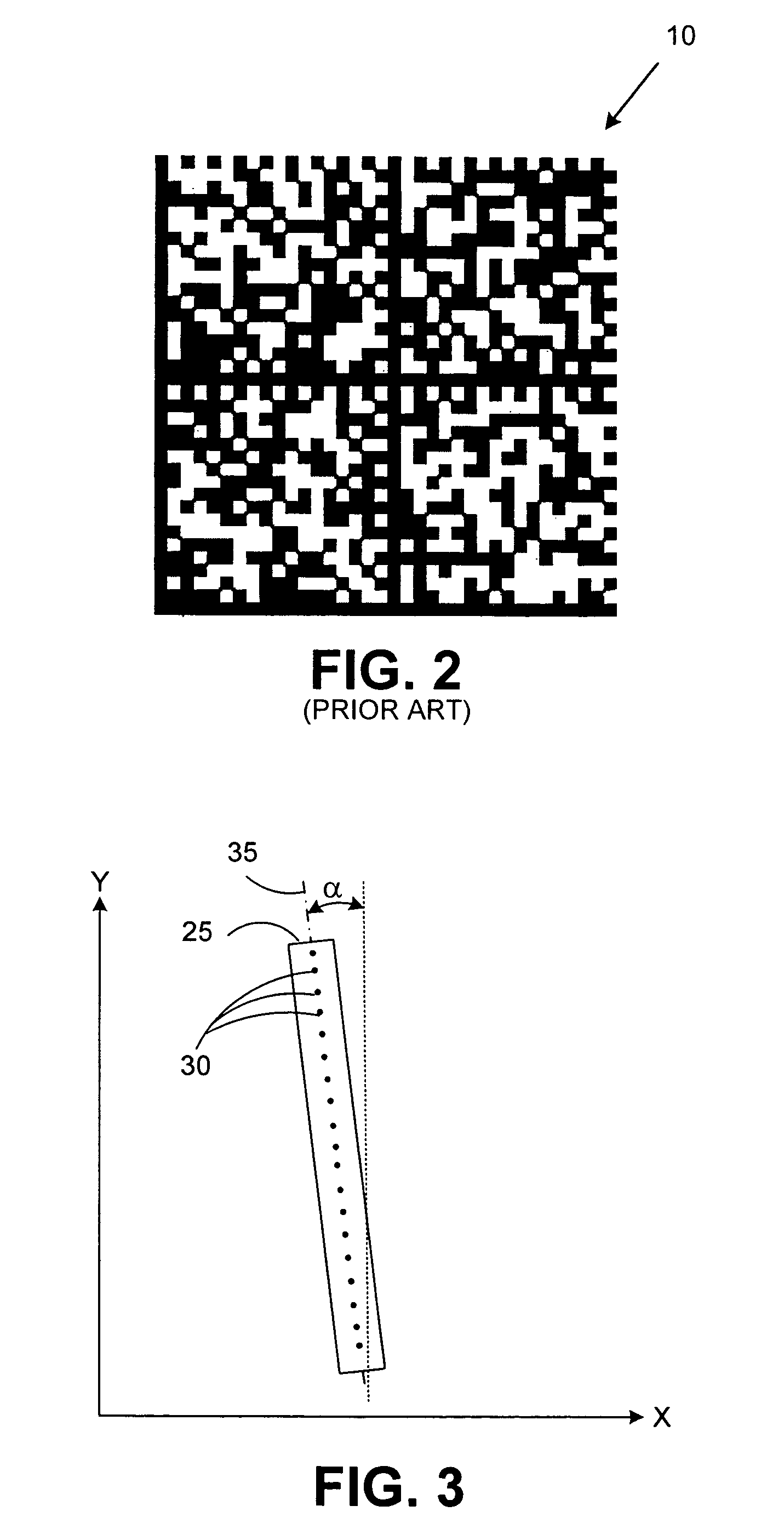Method for detecting forged barcodes
a two-dimensional barcode and forged technology, applied in the field of fraud detection, can solve the problems of uncontrollable quality, unfavorable prosecution, and inadequate protection of two-dimensional barcode copying by common watermarks, and achieve the effect of facilitating detection
- Summary
- Abstract
- Description
- Claims
- Application Information
AI Technical Summary
Benefits of technology
Problems solved by technology
Method used
Image
Examples
Embodiment Construction
[0028]The present invention provides a method of printing a two-dimensional barcode, such as a Data Matrix symbol, by slightly tilting the print head, which results in slightly tilted barcode, that facilitates the detection of various types of forgery attempts including: (i) a low level forgery of the barcode that consists of a simple scan and reprint of the barcode (which, as is known, inevitably increases the variance in the tilted edge of the barcode), (ii) a low level forgery of the barcode that consists of a reproduction (i.e., a read and regeneration) and subsequent printing of the barcode using a printer with a non-tilted print head by a fraudster that is not aware of the tilt in the original barcode (and thus the tilt in the legitimate print head used to create the original barcode), and (iii) a higher level forgery of the barcode by a fraudster that is aware of the tilt in the original barcode and that digitally tilts / shears the barcode (with software like Photoshop or the ...
PUM
 Login to View More
Login to View More Abstract
Description
Claims
Application Information
 Login to View More
Login to View More - R&D
- Intellectual Property
- Life Sciences
- Materials
- Tech Scout
- Unparalleled Data Quality
- Higher Quality Content
- 60% Fewer Hallucinations
Browse by: Latest US Patents, China's latest patents, Technical Efficacy Thesaurus, Application Domain, Technology Topic, Popular Technical Reports.
© 2025 PatSnap. All rights reserved.Legal|Privacy policy|Modern Slavery Act Transparency Statement|Sitemap|About US| Contact US: help@patsnap.com



